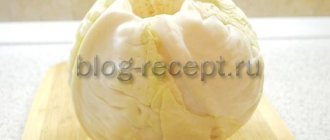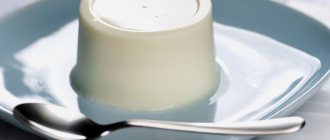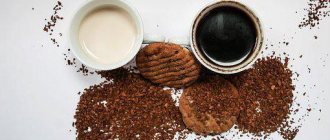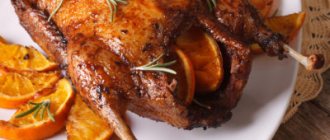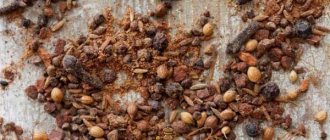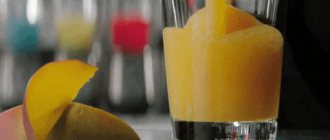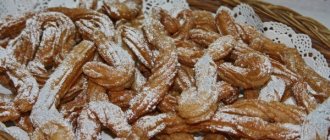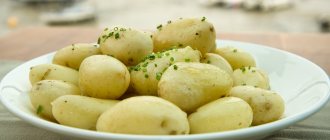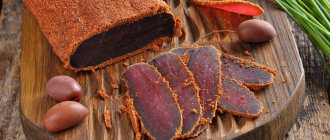Remember cinnamon rolls from your childhood? It was so great to unwind a spiral of sweet dough right on the street and lick your fingers! It seemed that the world was huge and warm, we would definitely fly to distant stars and everything would certainly be fine. Things haven’t worked out with the stars yet, but the smell and taste of cinnamon still reminds us of comfort and safety. What do we know about this spice, where is it mined and how is it used?
Where and when was cinnamon discovered? Historical reference
Humanity has known and loved cinnamon for thousands of years. Even the ancient Egyptians used it in cooking and even when mixing embalming solution. And a spice with a characteristic aroma was mentioned in the Old Testament: Noah’s Ark was soaked with oil from it. Evidence suggests that cinnamon quickly became popular in the Roman Empire and Byzantium, after which it came to Europe with Arab merchants.
Traders brought herbs and spices from hot and mysterious countries; overland travel was dangerous and difficult. It is not surprising that the imported goods, in particular cinnamon, turned out to be very expensive, and only noble and rich Europeans could buy it.
Despite the widespread distribution of the spice in Europe, cunning merchants kept the method of its extraction secret until the beginning of the 16th century. In order not to lose their monopoly on the cinnamon trade and justify its exorbitant price, they frightened their customers with colorful tales about the terrible difficulties those who heroically extract the spice had to face.
One of these legends
was recorded in the 5th century BC. e. Greek historian Herodotus: according to his version, huge mythical birds built their nests from cinnamon sticks, located on the tops of mountains, where even the most dexterous and brave daredevils could not climb. People left large pieces of bovine meat below so that feathered predators could collect them. When the bird brought the prey to its nest, it fell to the ground, unable to bear the weight, which made it possible to finally get the precious cinnamon.
In another legend
it was said that cinnamon grows in deep gorges guarded by terrible dragons and poisonous snakes. And the 1st century Roman philosopher Pliny the Elder wrote that cinnamon was brought from Ethiopia on rafts without oars or sails, which were set in motion only thanks to the courage of the person driving them.
Cinnamon was used by butchers for preservation, healers, perfumers, and by that time ordinary townspeople had thoroughly tasted and loved it.
Spices were one of the reasons to equip expeditions to uncharted lands. Christopher Columbus wrote to Queen Isabella with delight that he had managed to find cinnamon in the New World. True, upon closer examination of his findings, it became clear that he had found something else... The ferocious conquistador Gonzalo Pizarro also robbed America for a reason: in addition to the treasures of ancient tribes, he dreamed of finding “pais de la canela” (“the land of cinnamon”). .
Wars for cinnamon and the right to trade it
In 1518, Portuguese sailors were incredibly lucky: quite by accident, they saw how the inhabitants of Ceylon were extracting cinnamon. Without thinking twice, they declared the island their territory, and the indigenous population their slaves. In this simple and crude way they gained control of the cinnamon trade for many hundred years.
The Ceylonese, conquered but not submitted to the Portuguese, entered into an alliance with the Dutch in 1638 to gain freedom from the invaders. The Dutch promised help, but they loved cinnamon and the clink of gold coins just as much. Ceylon was occupied again: this time Holland received a monopoly on cinnamon for the next 150 years.
In 1784, the British captured Ceylon (after their triumph in the fourth war with the Dutch), but then the struggle for the spice suddenly ended. By the beginning of the 19th century, cinnamon had ceased to be precious, as it began to be mined in other parts of the world that had been discovered by that time, and in general chocolate had become fashionable everywhere.
Nowadays, fortunately, there is no need to fight for the right to own the treasured cinnamon: on store shelves you can easily find two types of spices - Ceylon cinnamon and cassia. The latter is produced in Indonesia and other countries, it has a sharper and more distinct aroma. It is cassia that we buy most often to make apple pie, sprinkle on cappuccino, or make a marinade for meat. The more expensive Ceylon cinnamon is still mined only in Sri Lanka, and its taste and aroma are subtler and softer compared to cassia. However, not many people can notice the difference, except perhaps in price.
How can you tell if cinnamon is real and where does it grow?
In fact, both cinnamon and cassia are the bark of the cinnamon tree, but they are mined in different countries and have slightly different beneficial qualities. Traditionally, “real” cinnamon is considered to be grown in Ceylon (Sri Lanka) and in some areas of Indonesia and China. It is rolled into a tube (a spiral is visible from the end), a little lighter than cassia, the bark is thin and soft, and experts call its aroma more “voluminous” and interesting.
Cassia is grown in Madagascar and in China, Myanmar, Indonesia and Laos. The packaging usually says that it is Indonesian or Chinese cinnamon. It is sold in the form of sticks that are twisted inward on one side or both; the bark is darker, thicker and rougher when compared to Ceylon cinnamon.
Culinary preparation
In terms of product quality, as well as to maximize flavor and aroma, it is best to take the sticks and grind them yourself before adding them to the dish.
To do this, first dry the sticks in a frying pan, this will allow the cinnamon to become more fragile and soft. Only after this procedure, place the sticks in a bag and roll with a rolling pin; you can also grind the spice using a mortar. Place small pieces in a blender, coffee grinder or food processor.
How is cinnamon extracted?
Small brown tubes with a pleasant aroma are the dried bark of an evergreen tree (Cinnamomum, or cinnamon laurel) up to 20 meters high. As we wrote above, it is growing in many countries.
The bark is collected by hand on rainy days (to make it easier to remove it from the trunk and branches), the top woody layer is peeled off, and then laid out on wire racks to dry. The most fragrant bark grows at the base of the tree, and that which is on the upper part and branches is of less value, since it has not yet accumulated a large amount of essential oils, which give the spice that very enchanting aroma.
Most of us think of cinnamon as having a sweet taste and smell, so it is traditionally used in baking and for making drinks (tea, hot chocolate, coffee), but in the East and Asia the spice is used more widely. In India and China, cinnamon is part of the famous curry seasoning; in Moroccan, Arabic, Pakistani, Syrian and Iranian cuisine, it is usually added when stewing lamb meat, preparing pearl barley and peas, couscous and soups. Known and loved around the world, British stouts are also flavored with cinnamon.
Choosing a quality spice
Cinnamon can be Chinese, Ceylon, tree cinnamon or the so-called cinnamon. Most often on sale are Chinese (cassia) and Ceylon, in appearance they are hardly distinguishable from each other. It is the Ceylon spice that has a greater effect on the body, which is why it is advisable to buy just such a spice.
To buy high-quality cinnamon from the island of Ceylon, you need to evaluate its appearance and smell (in comparison with Chinese):
- The aroma is tart, but weak. Cassia produces a bright, sweetish aroma.
- The color of the sticks is not too bright, sandy-yellowish, uniform on the outside and inside. Cassia sticks are reddish-brown or gray-brown in color.
- Ceylon cinnamon sticks crumble easily. Cassia is hard and sometimes even a coffee grinder cannot cope with grinding individual pieces of this spice.
- The structure of a cinnamon stick resembles a cigar - many curls and layers are visible inside. The individual layers of cassia sticks are clearly visible and it curls into only 1-2 curls.
Beneficial properties of cinnamon
What valuable qualities made cinnamon so desirable that everyone was happy to buy it or receive it as a gift - from powerful kings and emperors to simple peasants? Cinnamaldehyde owes its characteristic aroma to cinnamaldehyde: it is believed that most of its health and metabolic benefits are due to the presence of this substance.
Cinnamon powder contains many vitamins and microelements:
- vitamin A (good for vision);
- vitamin PP (nicotinic acid, or niacin, is necessary for the treatment of vascular spasms, many gastrointestinal diseases, stress and fatigue);
- vitamin E (responsible for healthy skin, hair and nails, helps the liver function);
- Vitamin K (regulates blood clotting and helps absorb nutrients);
- choline (vitamin B4 is needed to improve metabolism in the tissues of the nervous system, normalize fat metabolism and weight loss);
- dietary fiber (required for normal digestion and maintaining the function of intestinal microflora);
- calcium (essential for bone growth and muscle function);
- magnesium (necessary for the functioning of the nervous system, reducing stress and anxiety);
- zinc (supports immunity, helps wound healing, is considered a natural antiseptic);
- selenium (helps the functioning of the thyroid gland);
- sodium (regulates water-salt metabolism, needed by muscles);
- phosphorus (needed for the formation of tissues, especially nerve and bone).
100 g of cinnamon powder contains:
- 0.4 g proteins,
- 0.1 g fat,
- 6.3 g carbohydrates,
- 20 kcal.
Cinnamon is rich in antioxidants
Antioxidants are needed to protect tissue and organ cells from oxidative stress - we all suffer from it. Cinnamon is a real champion in terms of polyphenol content and confidently outperforms many recognized record holders in this indicator (anise, cocoa powder, green tea, berries).
Cinnamon has anti-inflammatory properties
Inflammation occurs when the tissues of the human body are damaged and in cases where an infection of any kind enters the body. Cinnamon is used in folk medicine in different countries to treat inflammatory processes (including chronic ones). Numerous studies confirm its benefits.
Cinnamon reduces the risk of developing cardiovascular diseases
Diseases of the heart and blood vessels are a real problem of our time. Together with oncology, this is the most common cause of early death in different countries. The beneficial qualities of cinnamon are associated with strengthening blood vessels and cleansing them of plaque.
The spice reduces cholesterol levels (including “harmful” LDL cholesterol and triglycerides), while “good” HDL cholesterol remains the same. Note that this effect can be obtained by consuming only 110 mg of cinnamon daily (for reference: a standard level teaspoon contains 3 grams of cinnamon powder).
Cinnamon may increase the body's sensitivity to insulin
Insulin is one of the most important human hormones that controls metabolism and level of vital activity. It is also responsible for transporting glucose from the blood to all cells of the body.
Some people become insulin resistant. This is called insulin resistance: this happens, for example, with metabolic syndrome and type 2 diabetes. Cinnamon can reduce insulin resistance, so that insulin begins to perform all its functions correctly.
Cinnamon powder is good for women's health
The spice is great for reducing pain during menstruation. If you regularly drink tea or smoothies with cinnamon, your mood will become more stable and even, anxiety and symptoms of depression will soften. Cinnamon protects the organs of the female reproductive system from infections and is considered a strong aphrodisiac.
There is a myth according to which cinnamon sticks were sewn into the luxurious belt of the goddess of beauty and love, Aphrodite. The enchanting aroma of spice enhanced the beauty's attractiveness, so that no man could resist the temptation. By the way, cinnamon oil is actually included in many perfumes, which really make women more sensual and self-confident.
And for men too
It is believed that cinnamon powder (a common ingredient in many folk recipes) helps restore male strength and cure prostate diseases. Cinnamon kills pathogenic bacteria and strengthens the immune system, and has a positive effect on the functioning of the central nervous system.
Cinnamon lowers blood sugar levels
The aromatic spice is famous for its ability to reduce sugar levels in the body. First of all, it reduces the volume that enters the blood immediately after eating. Essential oils and active substances of cinnamon have a beneficial effect on digestive enzymes, which slow down the breakdown of carbohydrates in the gastrointestinal tract.
Numerous studies have shown that the spice has anti-diabetic properties: it can reduce blood sugar levels by an impressive 10-30%. A daily dose of 1–6 g (from half to two teaspoons of powder) is considered sufficient to achieve the desired effect.
Cinnamon helps with neurodegenerative diseases
These are disorders in which the structure or functioning of brain cells progresses. Alzheimer's and Parkinson's diseases are considered the most typical. Two compounds found in cinnamon appear to prevent and slow the buildup in the brain of a protein called tau, which is one of the hallmarks of Alzheimer's disease. Research has shown that the spice protects neurons by normalizing neurotransmitter levels and improving their function.
Cinnamon may protect against cancer
Cinnamon has been repeatedly studied for its potential benefits in treating and preventing cancer. It turned out that the active substances contained in the spice help slow down the growth of cancer cells, gradually leading to their death (of course, with complex therapy).
Cinnamon helps with bacterial and fungal infections
Cinnamaldehyde, one of the main active components of cinnamon, helps cope with various types of infections. Cinnamon oil is useful in curing respiratory diseases caused by fungi. The spice is also effective against bacteria such as listeria and salmonella. The antimicrobial properties of cinnamon are used in the treatment of teeth and gum inflammation: naturopathic toothpaste and solutions for breath freshening are often made with the spice.
Chemical composition
Nutritional value of cinnamon (Cinnamonum verum) per 100 g.
| Name | Quantity | Percentage of daily value, % |
| Energy value (calorie content) | 247 Kcal | 12 |
| Carbohydrates | 50.59 g | 39 |
| Protein | 3.99 g | 7 |
| Fats | 1.24 g | 4,5 |
| Dietary fiber | 53.1 g | 133 |
| Folates | 6 mcg | 1,5 |
| Niacin | 1.332 mg | 8 |
| Pantothenic acid | 0.358 mg | 7 |
| Pyridoxine | 0.158 mg | 12 |
| Riboflavin | 0.041 mg | 3 |
| Thiamine | 0.022 mg | 2 |
| Vitamin A | 295 IU | 10 |
| Vitamin C | 3.8 mg | 6 |
| Vitamin E | 10.44 mg | 70 |
| Vitamin K | 31.2 mcg | 26 |
| Sodium | 10 mg | |
| Potassium | 431 mg | 9 |
| Calcium | 1002 mg | 100 |
| Copper | 0.339 mg | 38 |
| Iron | 8.32 mg | 104 |
| Magnesium | 60 mg | 15 |
| Manganese | 17.466 mg | 759 |
| Phosphorus | 64 mg | 9 |
| Zinc | 1.83 mg | 17 |
| Carotene-ß | 112 mcg | — |
| Cryptoxanthin-ß | 129 mcg | — |
| Lutein-zeaxanthin | 222 mcg | — |
| Lycopene | 15 mcg | — |
What you need to consider if you use cinnamon in the kitchen and at home
Cinnamon is a powerful spice, so using it in excess can affect your health. Please pay attention to safety precautions when using cinnamon powder in cooking, cosmetology and everyday life:
- You can get overstimulation of the nervous system if you consume too much cinnamon. This, in turn, will lead to sleep disturbances, muscle spasms and feelings of anxiety, headaches and dizziness. You should not take more than one small pinch of cinnamon powder at a time.
- Be careful when pouring the powder into a bowl or sprinkling it on the dough: do not inhale the cinnamon. Dietary fiber irritates the nasal mucosa and lung tissue and can cause swelling.
- If you are bleeding, you should reduce the amount of cinnamon you consume, as it can thin the blood.
Contraindications (harm) and side effects
Pregnant and breastfeeding women, diabetic patients, and those taking anticoagulants or undergoing surgery should avoid cinnamon in excess amounts.
Contraindicated if you have a food allergy to this spice.
Raw cinnamon can cause choking and respiratory distress syndrome (respiratory failure). Eating large amounts of cinnamon sticks can cause inflammation of the taste buds on the tongue, swelling of the gums and mouth ulcers.
Excessive doses of cinnamon can lead to difficulty breathing, dilation of blood vessels, drowsiness, depression, or even convulsions.
To experience any dangerous side effects of cinnamon, you would have to eat very large amounts of this spice, but in normal culinary doses it is safe and beneficial.
How to use cinnamon for weight loss
Those who are hampered by extra centimeters and kilograms can try drinking cinnamon water to become slim. To make one liter of the drink you will need a couple of cinnamon sticks (or ¾ teaspoon of cinnamon powder), half a tablespoon of honey and, if desired, ginger, turmeric, black pepper and lemon. You need to take a pinch of spices: they enhance the beneficial properties of cinnamon and help improve metabolism.
Cinnamon and spices should be brewed with boiling water, then cooled to a temperature of about 40 degrees, after which you can safely add honey. You need to drink cinnamon water four times a day - half an hour before meals and no later than an hour before going to bed.
The drink relieves digestive problems, helps glucose to be absorbed and not stored as fat reserves, effectively removes toxins from the body, accelerates metabolism and reduces the desire to eat something sweet and tasty.
It is clear that in order to achieve a sustainable result, you will also need to reconsider your diet, making it balanced and healthy, give up bad eating habits and go in for sports (at least start walking).
The use of cinnamon in cosmetology
Cinnamon powder or essential oil is included in many skin and hair care products - both factory-made shampoos, masks and scrubs, and those prepared independently at home.
Cinnamon powder for healthy and shiny hair
In many cultures, cinnamon is added to henna powder when brewing: it deepens and brightens the color, gives the hair a golden hue and a luxurious aroma. They even lighten curls with cinnamon powder: this method only works on soft light brown hair and allows you to change the shade by several tones.
Cinnamon is also great for nourishing hair follicles: hair roots are strengthened and hair grows faster. To do this, cinnamon powder is mixed with honey or sour cream, yolk or kefir, and even beer. When selecting the ingredients of a hair mask, you need to focus on your scalp type.
Cinnamon in face and body masks and skin nourishing creams
A mask of cinnamon powder smoothes the skin, making it elastic, soft and tender. With constant use, fine wrinkles will smooth out and inflammation will go away. For oily and acne-prone skin, a mask is suitable in which you need to mix:
- a teaspoon of cinnamon,
- banana,
- a teaspoon of lemon juice.
The mixture should be mixed thoroughly, left on the face for 20 minutes, rinsed with cool water and applied with your usual nourishing cream. If you need to tone your skin (suitable for women over 30), you should add a spoonful of honey to the mixture.
A great soft scrub can be made by mixing olive oil with brown sugar and cinnamon. For those who want a harsher option, we recommend adding coffee grounds to the mixture. This exfoliant will remove dead skin particles, improve blood circulation and reduce the “orange peel” effect.
Use of cinnamon in folk medicine
Ointments and dry mixtures for rubbing are most often prepared from cinnamon powder. Infusions are prepared from cinnamon powder and tubes. Essential oil is used for inhalations and compresses: useful for treating colds and respiratory diseases.
Cinnamon has a strong warming effect. In different recipes it is mixed with honey and camphor, herbal extracts and vegetable oils.
Using cinnamon in everyday life
Cinnamon oil is used in the East to scent rooms and get rid of annoying insects: bedbugs, ants, mosquitoes (the aromas of cinnamon and cloves together are especially good) and even cockroaches. A cinnamon solution is used to disinfect floors and door handles, kitchen tables and children's toys. It's safe for children and pets, environmentally friendly and fun to do around the house, without the need for gloves.
Use of cinnamon in drinks
The aromatic spice perfectly complements the taste of popular drinks such as tea, berry fruit drinks, freshly squeezed juices (especially citrus fruits) and smoothies, cocktails based on milk and kefir. Baristas around the world suggest adding cinnamon every time they make your favorite cappuccino or latte.
Warming coffee with cinnamon is one of the most popular drinks in countries where winter is accompanied by cool weather or frost. Usually, spice powder is used for preparation (no more than half a teaspoon, so as not to be too loud in the composition). Hot drinks are traditionally prepared immediately with spices, but sometimes cinnamon powder is added when serving.
Do you like cinnamon? What are you cooking with it?
